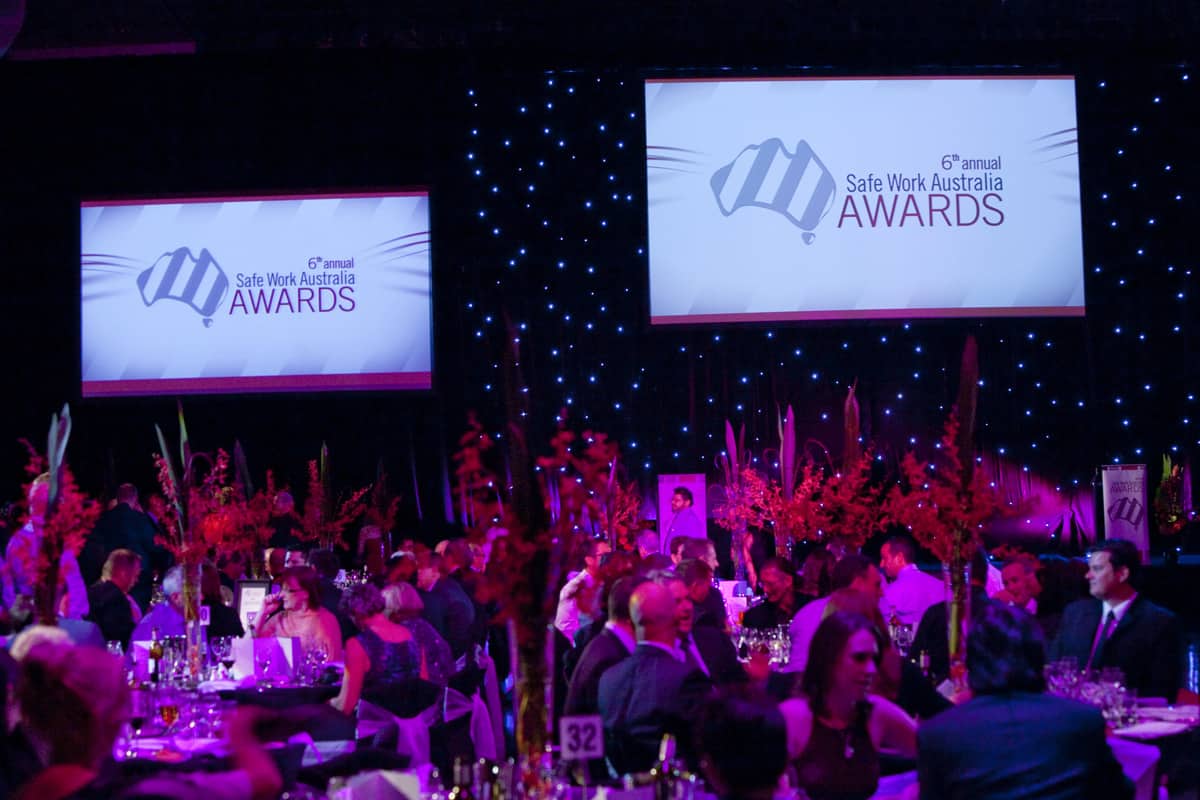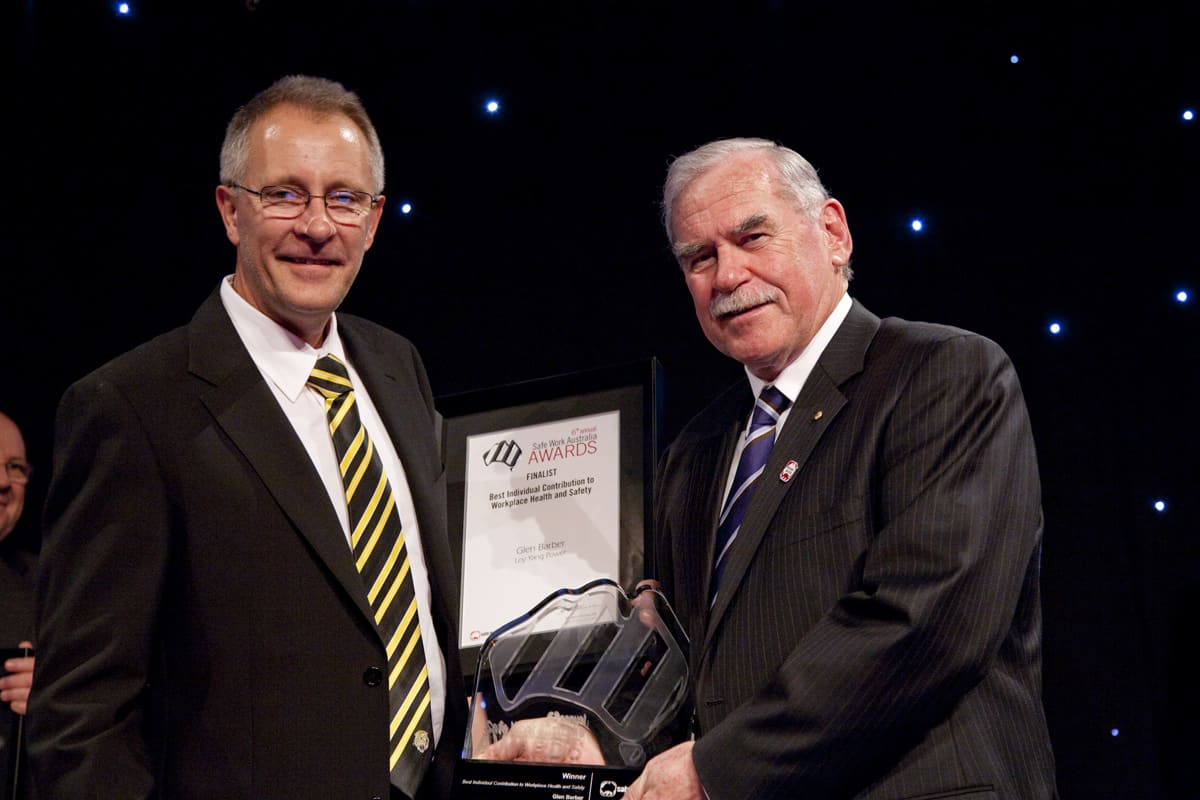The 6th annual Safe Work Australia awards concluded a couple of hours ago. The event was an opportunity to meet Australians prominent in the safety profession, celebrate innovation and to acknowledge individual efforts. The winners’ achievements were largely significant but there are problems with the OHS award processes across Australia and the Safe Work Australia Awards reflected some of these.
 The event, held at Parliament House, included a good collection of corporate, legal and government decision-makers in the audience of 350 guests. The Industrial Relations Minister, Chris Evans, delegated Senator Jacinta Collins (media statement available HERE) to attend the function and she expressed a rudimentary understanding of workplace health and safety. She, like many others, stated that “all workplace incidents are preventable”, a statement whose value is becoming dubious. If safety professionals desire evidence-based decision making, someone needs to research the “preventable” statement as it risks creating unreasonable expectations of safety in the community, if it has not already.
The event, held at Parliament House, included a good collection of corporate, legal and government decision-makers in the audience of 350 guests. The Industrial Relations Minister, Chris Evans, delegated Senator Jacinta Collins (media statement available HERE) to attend the function and she expressed a rudimentary understanding of workplace health and safety. She, like many others, stated that “all workplace incidents are preventable”, a statement whose value is becoming dubious. If safety professionals desire evidence-based decision making, someone needs to research the “preventable” statement as it risks creating unreasonable expectations of safety in the community, if it has not already.
Category 1: Best Workplace Health and Safety Management System
- Private Sector – Ballina Bypass Alliance
- Public Sector – Courts Administration Authority
Category 2: Best Solution to an Identified Workplace Health and Safety Issue – CSIRO Livestock Industries
Category 3: Best Workplace Health and Safety practice/s in Small Business – Clifford & Co Response Services
Category 4: Best Individual Contribution to Workplace Health and Safety –
- An employee, such as a health and safety representative – Glen Barber
- An outstanding contribution by an OHS manager or a person with responsibility for work health and safety as part of their duties – Daniel Germany
The Safe Work Australia Awards are purposely held on 28 April, the international day of health and safety, but there was no minute’s silence to acknowledge the deaths of workers, as there had been throughout Australia that morning. Such an acknowledgement would have been appropriate and it would have reminded attendees of the ultimate purpose of the evening. Dr Yossi Berger, a trade unionist attendee, told me that sometime during the evening there should have been a “reality-check” for attendees, a reminder of the reality of the factory floor. Only Senator Jacinta Collins mentioned the International Workers’ Memorial Day in her speech.
Challenges
The Safe Work Australia Awards, even though they are the national OHS awards, have always suffered from being held 6 months after the qualifying State awards, some could call these the “heats” for the national awards. And also due to the variable support for the awards from State OHS regulators. There was considerable discussion in the audience tonight about the worth of the awards to the winners. It was accepted that the awards provide a “warm and fuzzy” sense of achievement and altruism but that feeling on lasts a short time. It is reasonable for business operators to ask what financial benefit the awards provide, particular those companies that win awards for OHS management systems. Some involved with State awards have questioned why awards are given for what businesses are already legislatively required to do.
It can be argued that safety awards were always about recognition, and I would argue they still are. But such award evenings, and some State events are hellishly expensive, should have a preventative purpose by showing how OHS solutions have been applied in some industry sectors and small businesses. This benefit can only be derived through the communication of the award outcomes. If the community does not know about the awards, they will not know about hazard solutions. Few award events in Australia gain any mainstream media – print, radio or television – beyond the advertisements that are inserted by the OHS regulators and award organisers. A new communications strategy is desperately needed.
This communication should not be mistaken for marketing. Successful and sustainable communication is achieved through inclusive consultation. Marketing is too often exploitative. The latter is a problem that seems to have appeared in Victoria with WorkSafe’s relaunch of its OHS awards that some have described as a popularity contest. The online applications and monthly rankings need considerably more explanation and probity in order to avoid voting manipulation that has occurred in other similar voting processes, and to reduce the chances of the nominee with the most marketing resources “buying” a position in the rankings.
WorkSafe Victoria is at least trying something new in order to counter the reducing number of award applicants and WorkSafe can justifiably counter some criticism by asking the critics how they would address the problem. But the big question needs to be “what is the purpose of OHS awards?” It could also be asked, as it was tonight by some attendees, “how are these award events improving the safety of workers?”. These questions must be asked at a national level with State egos being left at the door.
It has taken several years to harmonise the various State OHS awards processes and the Victorian changes have the potential to derail the existing structure. Whether WorkSafe Victoria’s changes will nobble the awards process or generate the spark that the process requires remains to be seen but OHS awards are more than a marketing exercise, or should be, and there needs to be a strategy for promotion and communication that does not jeopardise the existing integrity of the process.
Categories
The Safe Work Australia awards continue to need some work on categories although these have been purposely harmonised across the country in recent years. In the private sector categories, there is often a disparity between companies with the OHS resources of national corporations, and medium-sized organisations. There are many levels of private sector and these should be reflected in the national awards.
Also, in several categories, physical solutions and design solutions compete with OHS management systems. There is a considerable difference between engineering solutions and administrative solutions and separate categories should be applied.

The standout category at the national and state OHS awards are the employees who provide inspiration. There are genuine tears of pride in the finalists and winners for the recognition they receive in the awards processes. The winner at tonight’s awards was Victorian Glen Barber who provided a moving thank-you speech. It reminded many attendees of the speech he made at the Victorian award ceremony last year where he accepted the award with his teenage daughter. He explained how his devotion to safety had affected his family but that his devotion was for his family and those of all Victorian families.
Future
There is little doubt that OHS awards in Australia need a “re-boot”. At the moment awards are working from in a niche position. Just as OHS awareness has grown to become a community ideology, so the awards need to be seen as relevant to that awakened community. This can be achieved through improved communication, greater explanation of the categories and finalists, and a stronger network of safety award advocates throughout the Australian community.
Participants need to receive more than acknowledgement and a weighty trophy. There needs to be a longevity to their achievement. Is there a Hall of Fame? Perhaps nominate individual winners and finalists in the Australian of the Year process or for an Australia Day honour. Provide the individual finalists with a grant that offsets the cost of the research they do in their own time, or for the winners to take their family on a well-deserved holiday. Provide winners with an opportunity to be involved in government policy decision-making on OHS by inviting them onto the various technical advisory committees at State and National level.
These awards are managed by government OHS regulators and there must be opportunities to increase the “worth” of these awards by not only acknowledging winners but by also rewarding them. Governments need to see these awards as opportunities to invest in the best and brightest safety advocates and in advocates who have actually achieved workplace change.

I\’ve never been to the National Awards but did attend the Awards in Adelaide as a guest in 2007. I must say, I was really surprised at how extravagant in general the whole affair was. The food was comparible to any fine dining experience and the atmosphere was…well for me it was exciting. I was sitting in a room with what I thought were the champions of something I felt passionate about. Honestly I was close to tears so often .. I loved seeing the individual awards and the pride on their faces.
Alas, it all turned sour toward the end. The thud for me personally came as soon as the \’Employer of the Year\’ award was announced (joint winners).
Hearing Santos\’ name called out, watching all the pomp and pageantry .. I was at a loss as to how a company that had a current prosecution under way could even qualify for an award, let alone win top honours.
It sure took the gloss in a hurry. Many folk there that night may not have been aware of the Santos / Diemould Tooling legal challenge – an argument that went on for some years later.
I wrote to the Executive Director soon after. The reply I received talked a lot about carrots and sticks – and yes I do believe that there was a suggestion that I might not be able to understand it because of my \’emotional\’ involvement in the matter. Hmmm…
6 months later Santos are of course a finalist in the National Awards for 2008. Once again I put pen to paper. This time the reply was a little different. It seemed that at least at the National level they thought a \’clean\’ prosecution slate was a good idea. I believe there are some guidelines now that would prohibit entry if a company is running a long drawn out legal challenge.
Mind you … it seems to me that there are enough intelligent academics involved in all these departments / organisations to pick this sort of thing up without a push from a dead kids mother. I mean come on …
Oh and I think it was 2010 there was yet another \’oops\’ result for Employer of the Year when highlighted by Channel 7\’s Today Tonight… alas this time the crown was taken away.
I\’m afraid it\’s all lost on me now.
Tony, I think it is unfair to dismiss the awards as nonsense. The award winners on my table last night were certainly not dismissive of the recognition they received.
I think the awards process can be given far more relevance than currently exists but the awards are certainly not irrelevant. The concept is sound but the application and, as I say above, communication needs a thorough revision.
Obviously the awards both state and national may have some impact by telling the nation in general there is something happening in the safety at work sector, however the real story still lays in the appalling performance of injury prevention and workers compensation outcomes.
All in all, a bit of fluff and nonsense which distracts from the real issues of fixing the problem. I congratulate any organization or individual that has a beneficial impact on OHSW although I doubt that the greatest employer group (small & micro business) has been well represented in such awards.